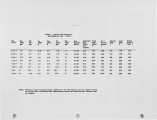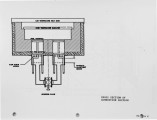| OCR Text |
Show 2 The major goal was to meet the NOx level, since meeting the other requirements would not be particularly difficult if the Nox level were not specified. A test burner rig was designed to be thermodynamically similar to the patented RRB. But a considerable development effort was required to achieve a test burner that would operate well and allow reliable test data to be obtained. However, results were obtained that indicated the RRB to be capable of operating as required. -~ The RRB Concept The RRB according to the original patent is shown in Figure 1. The combustion air enters the cool end of the regenerator on one segment of one burner element. It flows through the regenerator, picking up heat from the regenerator bed. At the hot end of the regenerator fuel is admitted through a manifold having many uniformly distributed orifices arranged on the manifold to distribute the fuel over the complete cross section of combustion zone, all the while mixing thoroughly with the combustion air. Combustion starts at that point and continues to completion. The surface, being hot, and having high emissivity radiates heat directly to its surroundings. The combustion product gases flow through the chamber formed by insulated side walls and the heat absorbing load to enter the surface of the second segment of the burner element, and flow toward the exit flue, past the inoperative fuel manifold, through the regenerator bed to the cool end and then to the flue. In a few seconds the valves are reversed to reverse the flow sequence. Test Apparatus and RRB Development Figure 2 shows a schematic of the test rig. The system was built to accommodate up to 50,000 BTU/hr heating rate, firing through the five inch by five inch burner segments. Cycling time could be varied. The fuel switching could be delayed compared to air switch timing. The regenerator plus burner beds could be set from one inch thickness to twelve inches thickness. They were five inches by five inches cross section over the full length. The top of the fuel manifold could be adjusted to an elevation any where within the porous bed. Also the combustion air ducting could accept diluent. Recording of data was by means of an Enerac 2000 with a printer recording 01' NOx, UHC, CO, and calculated CO:. A General Electric strip chart unit was used to record temperatures. Hand recordings were made of rotameter readings of fuel flow, main air flow, and air or diluent flow to the combustion air. Also, hand recordings were made of the inlet pressures to each rotameter. Cooling |












